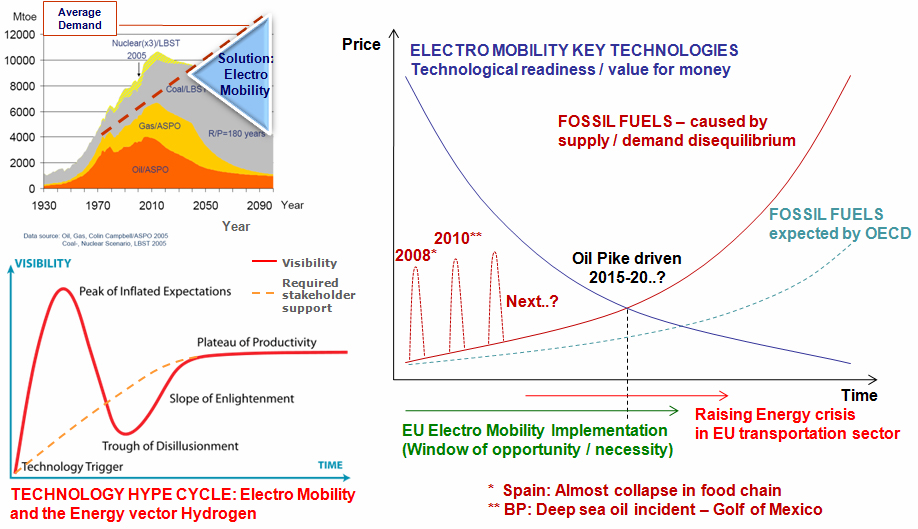Objectives and economic benefits

Objectives
- Focus on renewable resources, for European
Mobility
- Reduce CO2 emissions
- Avoid Peak-Oil consequences, through reduction of fossil fuel dependency
- Move electrical energy to Point of Sal (PoS) NOT fuels!
- Build
VA Energy Supply Grid (ESG), connecting northern (Wind), southern (Solar) and central renewable resources with Point-of-Sale (fuelling stations)
- Apply ‘Energy Vector Hydrogen’ for local H2 production
and energy storage at PoS, enabling European grid supply/demand balancing
(i.e. by IT controlled Demand Side Management)
- Develop business model for the VA ESG, incl.:
- Organizational model for a potential ownership
through a “European VA ESG Holding”, as a
public-private-partnership with 51% public (EU+national
governments) and 49% privately (Utilities (RES), Oil&Gas
(fuelling station networks etc.) owned shares
- Level of coverage/support by current
legal/regulatory frameworks
- Proposal for required extension/modifications of
current legal/regulatory frameworks
- Simultaneous setup: Infrastructure for mobile energy carriers Electricity and Hydrogen + Initial BEV, PHEV, FCEV fleets
- Implement VA ESG on initial 10 VA highways:
- European Wide Area Network (WAN) Smart Grid: HVDC buried highway cable, integrating energy resources (north-south)
- Local Area Networks (LAN) Smart Grid to PoS: HVAC/GIL
- Local Hydrogen Grids (HyG): Distribution of locally produced Hydrogen within local PoS clusters
- Reduce risk and secure ROI on VA infrastructure and fleet developments for European Mobility on Renewable Energy
- Establish VA ESG intersections with local crossing Mobility sub grids (train networks, stationary applications, etc.)
Economic benefits Europe - to enable:
- Efficient establishment of a European Mobility on Renewable
Energy
- Implement European Smart Grid solution in the transportation sector for an efficient balancing
(~100% electricity sale!) between the altering energy supply (Vector Renewable
Energies) and the energy load demand, though local energy storage (Energy Vector Hydrogen)
- Secure reliable transportation fuelling prices, as a key parameter for sustainable economic growth
- Rapid establishment of European Electro Mobility nucleus/pilot regions and their efficient integration
- Enable global Technology leadership for European industry
- Enforce reductions of CO2 emissions and dependency from fossil resources
- Saving of fossil resources for alternative industrial applications
TOP

